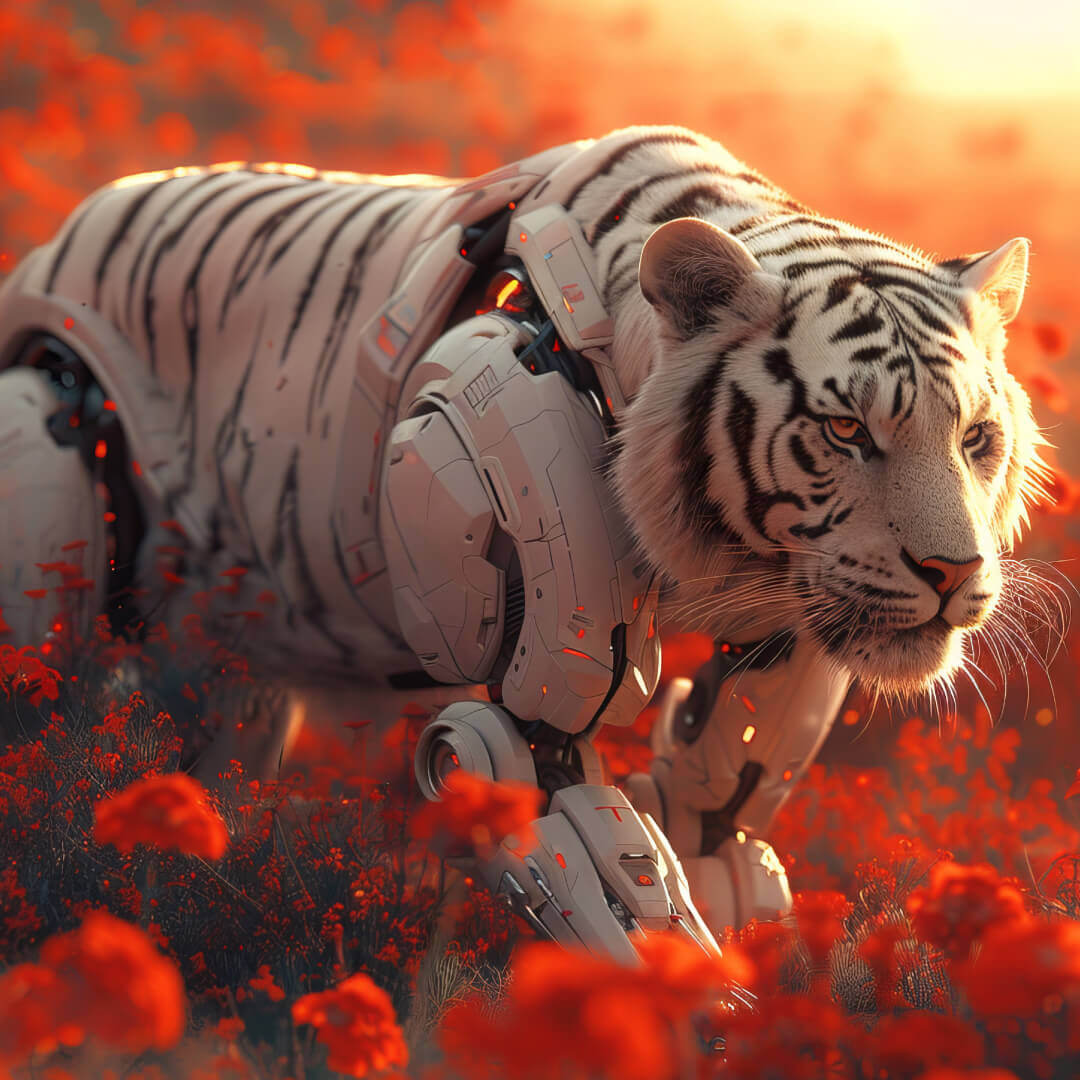Introduction: The Role of AI in Video Production
The world of video production has undergone significant transformation in recent years, largely due to advancements in artificial intelligence (AI). What was once a highly technical and labour-intensive process is now increasingly automated, making high-quality video production more accessible, faster, and cost-effective. AI is not only changing the way videos are created but also reshaping the entire video production industry.
Whether it’s automating editing processes, generating visual effects, enhancing video personalization, or streamlining post-production tasks, AI is revolutionizing how video content is created, optimized, and consumed. In this blog post, we will explore how AI is influencing video production, how businesses can leverage AI tools to enhance their content, and what the future holds for AI in the world of video.
How AI is Revolutionizing Video Production
AI’s integration into video production is helping businesses and creators improve efficiency, reduce production costs, and create higher-quality content. Let’s explore the different areas where AI is making a mark in the video production process.
AI-Powered Video Editing
One of the most prominent applications of AI in video production is in the area of video editing. Traditionally, video editing has been a tedious and time-consuming process requiring skilled professionals. However, AI is transforming this process by automating many aspects of video editing, allowing for faster and more efficient production.
AI-powered editing tools, such as Adobe Premiere Pro’s Sensei AI or tools like Magisto and Lumen5, allow creators to automate time-consuming tasks like:
- Auto-Cutting and Trimming: AI can identify key scenes and automatically cut the footage based on predefined guidelines, reducing editing time significantly.
- Scene Detection and Tagging: AI can identify different scenes, categorize them, and even tag elements within each scene, helping editors to easily navigate through the raw footage.
- Colour Correction and Grading: AI tools are now capable of automating the colour grading process, adjusting lighting, contrast, and hues to match the desired look and feel of the video.
- Audio Enhancement: AI can automatically improve audio by removing background noise, adjusting volume levels, and balancing sound quality across scenes.
This automated approach not only speeds up production timelines but also lowers the cost of editing, making high-quality videos more accessible to smaller businesses or independent creators who might otherwise struggle with expensive editing costs.
AI for Motion Graphics and Visual Effects
The demand for high-quality motion graphics and visual effects in videos is rising, but the production of these elements has historically required skilled artists and expensive software. With AI-driven tools, creators can now generate complex motion graphics and effects with minimal effort.
For example, AI can automatically create animated text, logos, and illustrations that adjust and adapt to the style and theme of the video content. Some AI tools, like Runway or DeepMotion, even use AI to create full-body animations, offering incredible flexibility for animators and filmmakers.
Additionally, AI-powered software can generate special effects such as background removal, object recognition, and real-time compositing. For instance, AI can automate tasks like tracking moving objects within a scene and applying effects only to those objects. This makes creating realistic visual effects faster and more accessible to a wider range of creators.
Automated Video Production
AI is making the entire video production process faster and more automated. From generating scripts to producing final edits, AI can assist in multiple stages, allowing creators to focus on the creative aspects of the video while the technology handles the more mechanical tasks.
- AI-Generated Scripts: AI tools, like OpenAI’s GPT-3 or Jasper, can now generate video scripts based on a few prompts or ideas. This can be especially useful for explainer videos, advertisements, and other content that requires specific messaging.
- AI-Powered Voiceovers: With the help of AI, creators can generate high-quality voiceovers in different languages and accents, making it easier to localize content for a global audience. AI-driven voice synthesis tools like Descript’s Overdub or Google’s WaveNet make it possible to generate realistic and expressive voiceovers without the need for human voice actors.
AI in Video Personalization
One of the most exciting uses of AI in video production is its ability to personalize video content at scale. AI-driven personalization tools analyze data about user behaviour, preferences, and interactions to generate videos tailored to individual viewers.
For example, AI can automatically adjust the video content based on the viewer’s location, age, gender, or browsing history. Personalized video content can dramatically improve viewer engagement and increase conversion rates for businesses in industries like e-commerce and online education.
This type of AI-powered video personalization is already being used in targeted marketing campaigns. For example, businesses can use AI to generate personalized product recommendations, custom promotions, or localized video content that resonates more deeply with their audience.
The Benefits of AI for Your Business
As AI continues to evolve, it offers businesses a wide range of benefits that can enhance their video production capabilities and overall content strategy. Here’s a closer look at the advantages of using AI in your video production process:
1. Cost Efficiency
AI-driven tools significantly reduce production costs by automating tasks that traditionally require manual labour. For businesses, this means lower operational expenses for video production, post-production, and distribution. AI can also minimize the need for expensive equipment and resources by automating processes that would otherwise require high-end software or specialist knowledge.
For example, AI-powered editing software can save time and money by automatically cutting videos, adjusting audio, or adding effects, tasks that would typically require professional editors. As a result, small businesses and startups can produce high-quality video content on a limited budget.
2. Faster Turnaround Time
AI enables businesses to produce videos faster than ever before. Automated tools can significantly reduce production time, allowing businesses to release content more quickly and stay relevant in fast-moving industries. AI’s speed and efficiency in tasks like editing, rendering, and compositing enable businesses to meet tight deadlines without sacrificing quality.
This is especially beneficial for industries that require frequent video updates, such as social media marketing, product demonstrations, or news media. AI ensures that businesses can produce and deliver content to audiences without the usual delays in the production process.
3. Enhanced Creativity
AI is not just about automation—it’s also about empowering creators. By automating routine tasks, AI allows creators to focus on the creative aspects of video production. For example, AI can handle mundane tasks like colour correction or audio mixing, while human creators can focus on crafting compelling stories, exploring new ideas, and adding unique artistic touches.
This allows businesses to experiment more freely with creative ideas and produce content that resonates with their audience on a deeper level. AI also opens up new creative possibilities, such as generative art, algorithm-driven animation, and interactive video experiences.
4. Improved Quality Control
AI can improve the overall quality of video content by ensuring consistency and precision throughout the production process. AI tools can monitor video footage for visual or audio inconsistencies and automatically make adjustments to maintain the desired level of quality.
For instance, AI can check for issues like improper lighting, poor sound quality, or visual artefacts and correct them automatically, resulting in a polished, professional final product. This is particularly helpful for businesses producing a high volume of content, ensuring each video meets the same standards without requiring human intervention.
5. Scalability
AI can help businesses scale their video production efforts by automating various parts of the video creation process. As a result, businesses can produce larger quantities of content without significantly increasing costs or labour. This is especially valuable for companies that need to produce content at scale, such as social media marketers or e-learning platforms.
For example, AI can automatically generate videos for different audience segments based on user data or create multiple variations of the same video for A/B testing purposes. This allows businesses to efficiently test different approaches and optimize their content strategy.
The Effects of AI Video Generation
AI video generation is an emerging field that has the potential to revolutionize video production. AI-generated videos use machine learning algorithms to create videos from scratch, often with little human intervention. These videos can be used for a variety of purposes, including explainer videos, advertisements, and social media content.
1. Speed and Efficiency
AI video generation significantly accelerates the video creation process. By automating the entire production cycle—from scriptwriting to editing—AI allows businesses to generate videos almost instantaneously. This is ideal for creating content that needs to be produced quickly, such as news updates, product launches, or time-sensitive campaigns.
2. Enhanced Customization
AI can create personalized videos for different viewer segments. By analyzing user data, AI can automatically adjust the video’s visuals, messaging, and even voiceovers to align with specific demographic preferences. This level of personalization increases engagement and ensures that videos resonate with viewers on a deeper level.
3. Cost-Effective Content Creation
AI video generation allows businesses to produce high-quality videos without the need for expensive production equipment or large teams of videographers and editors. This makes it easier for businesses, particularly small to medium-sized enterprises (SMEs), to generate content that competes with larger corporations in terms of production value.
4. Creative Possibilities
AI video generation can also unlock new creative possibilities. For example, AI can use existing footage or stock images to create entirely new videos, or it can generate synthetic video content based on text input. This offers vast opportunities for businesses to create innovative and engaging videos with minimal effort.
How AI is Used in Video Editing
AI plays a significant role in modern video editing by automating many of the tasks that used to require hours of manual labour. Here’s how AI is making video editing more efficient:
- Auto-Editing: AI tools can analyze the footage and automatically choose the best clips, apply transitions, and assemble them into a coherent narrative.
- Audio Enhancement: AI tools like Adobe Audition use machine learning to enhance sound quality, remove background noise, and even repair audio that was poorly recorded.
- AI-Assisted Color Grading: AI can detect the mood and tone of a video and apply colour grading to match the intended style. This results in a more cohesive visual experience without needing to manually adjust each scene.
- Content Recognition: AI can automatically tag visual elements, such as objects, faces, and locations, making it easier for editors to organize and locate content.
- Real-Time Editing Suggestions: AI can provide real-time feedback or suggest improvements for the video based on the project’s goals or audience preferences.
Conclusion: Embracing AI in Video Production for the Future
AI is undoubtedly transforming the video production landscape, offering businesses an array of tools to streamline production, enhance creativity, and reduce costs. From automated editing to AI-generated content and video personalization, AI technologies are enabling businesses to produce high-quality videos at scale and with greater efficiency.
As AI continues to evolve, its role in video production will only grow, opening up new creative opportunities and making high-quality video production more accessible to a broader range of creators and businesses. By embracing these technologies, businesses can stay ahead of the curve, ensuring their content is more engaging, relevant, and impactful in an increasingly competitive digital world.


